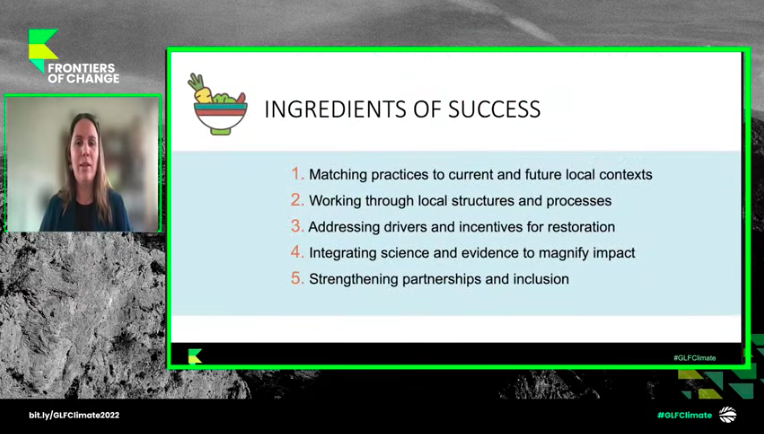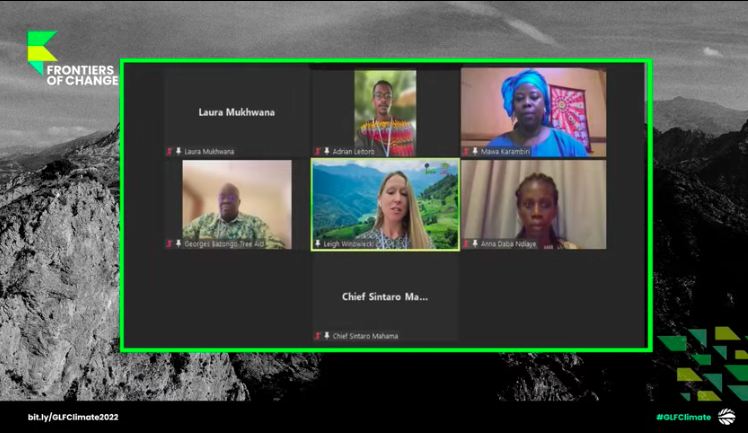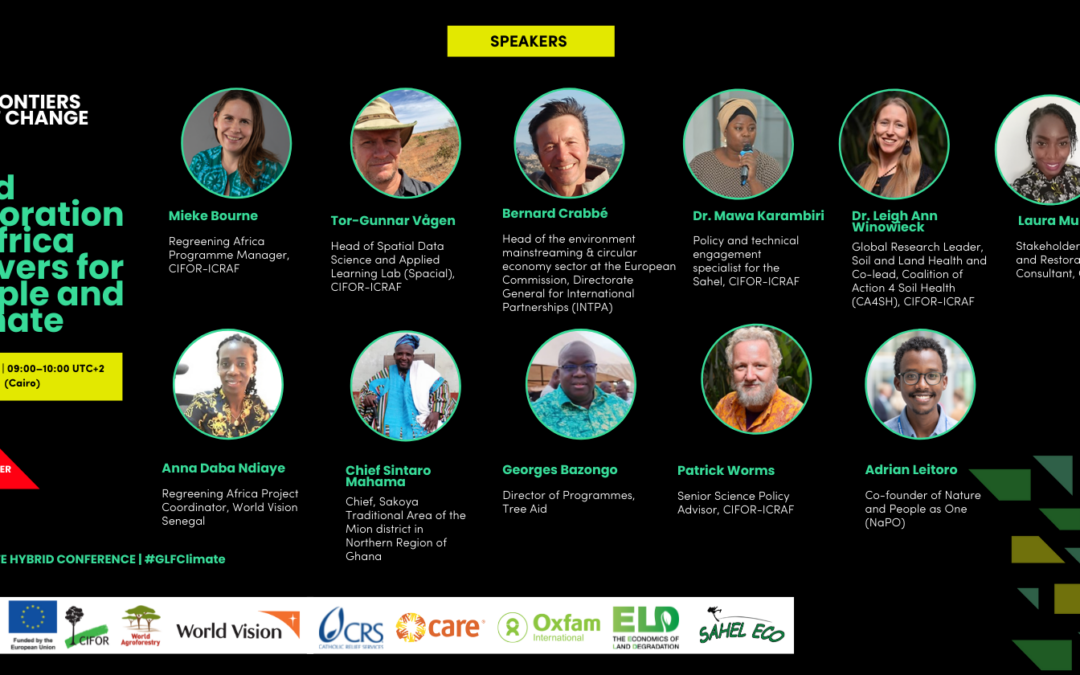By Marion Aluoch
Over the course of five years, the Regreening Africa project has demonstrated that restoring degraded land contributes to climate change mitigation and adaptation, biodiversity enhancement, and equitable improvement of local communities’ livelihoods.
This was clearly demonstrated at the Global Landscape Forum (GLF) Climate hybrid side event on November 11, 2022, as part of the COP 27 programme in Sharm el- Sheikh, Egypt. The session attended by 1,983 people across the globe including Germany and India, explored how land restoration delivers for people and climate.
Regreening Africa showed how large-scale land restoration in sub-Saharan Africa is possible. Mieke Bourne, the programme manager, demonstrated the significance of land restoration for climate change adaptation and mitigation in Africa and outlined the five essential elements that have contributed to the success of the programme.
“Through our various restoration interventions, we have identified five key ingredients for success: matching practises to current and future contexts; working through local structures and processes; addressing restoration drivers and incentives; integrating science and evidence to magnify impact; and strengthening partnerships and inclusion,” she said.
 Regreening Africa programme manager Mieke Bourne highlights the programme’s success.
Regreening Africa programme manager Mieke Bourne highlights the programme’s success.
She also stated that these must be integrated in order to scale up and further improve restoration efforts, as there is a lot of focus on restoration.
Integrating science, research, evidence, and monitoring in the global and local restoration agendas speeds up the impact on the ground. Tor Vågen, Head of Spatial Data Science and Applied Learning Lab (SPACIAL), demonstrated how research can provide robust, yet simple monitoring tools and techniques as key indicators of soil and land health and livelihood to track implementation on the ground.
“The citizen science of things is where the Regreening Africa app comes in. There’s a strong community engagement component where that is concerned, and we use the app to crowdsource information and scale data collection.”
The Land Degradation Surveillance Framework collects information on land health indicators and provides a framework for predictive modelling for mapping and systematic sampling,” said Tor.
A panel discussion comprised of researchers, implementers, youth, policymakers, and donors put the discussion into context. It was evident that integrating research into development is essential to ensure that data is meaningful, timely, and effectively communicated so that interventions can be tailored to meet the needs of farmers.
 The panelist at the GLF Climate session.
The panelist at the GLF Climate session.
“Research is driven by demand, and emphasis should be placed on how we communicate these findings,” said Dr. Leigh Winowieck, Global Reserach Leader, Soil and Land Health.
According to Adrian Leitoro, a restoration steward and co-founder of Nature and People as One (NaPo), engaging the youth in restoration is important as “we depend on the ecosystem for all the resources we get. The restoration agenda must be prioritised so that our future is not jeopardised.”
Value chains that improve livelihoods equitably are an important motivator for landscape restoration. Tree Aid’s approach as discussed by Georges Bazongo, Director of Programmes, has been a business-focused approach in which they engage communities in the production, processing, and marketing of products for sustainable livelihood.
According to Mawa Karambiri, policy and technical engagement specialist at CIFOR-ICRAF, enabling policy is a significant incentive for land restoration, particularly in terms of tenure and land rights. In Niger, for example, the assisted natural regeneration presidential decree has given farmers access to the restored ecosystem while also providing legal instruments for land security.
The role of traditional authorities and local governance is pivotal as chiefs are custodians of the land within the communities, hence they ensure natural resources are well managed.
“Chiefs are the custodians of land within communities, and any implementation that impacts the land requires their approval and participation, as they understand the dynamics involved in managing the land.” Chief Sintaro of Sakoya traditional area of Mion District in Ghana, explains.
According to Bernard Crabbe, Head of the Environment Mainstreaming and circular economy sector at the European Commission, the lessons highlighted by Regreening Africa are an opportunity to scale them to other initiatives.
“Taking care of land is key to navigating the challenges we are facing today. Regreening Africa offers a number of key ingredients for success to achieve the great vision of the Great Green Wall and the AFR100,” he said.
This story was produced with the financial support of the European Union. Its contents are the sole responsibility of Regreening Africa and do not necessarily reflect the views of the European Union.

